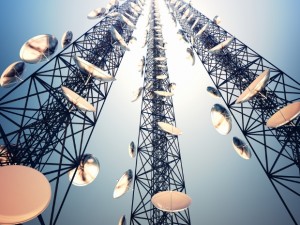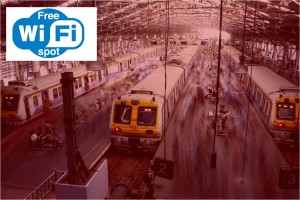Archive Post
Tarang Sanchar enters final lap and is due for official launch soon
Telecom Department’s portal Tarang Sanchar will be soon be active. It will give clarity to users at best. What exactly can users expect? It will let users check radiation compliance status of towers across the country and get a specific one tested by DoT on request and for a fee. It has entered the final phase and is due for official launch soon. The portal, which has been populated with data from 12.5 lakh base transceiver stations (BTS), will enable users to view tower-specific details such as the operator, the supporting technology (2G/3G/4G) and most importantly, if it meets electro-magnetic frequency (EMF) compliance norms.
The portal has been set up in close co-ordination with the industry. In case a subscriber wants to get a particular BTS tested by DoT to assess its EMF compliance level, the same can be done by putting in a specific request. There are two ways of testing. One is free testing and the other is a paid testing version. If the prescribed ceiling in a particular service area for testing of BTS has already been reached, the user can get the same tested by payment of a fee, most likely to be pegged at Rs 4,000. The fee is predicated on the fact that the testing process is elaborate, takes a few hours and involves technical capacity and manpower. The tower-specific data have been collated from all service providers and that the portal also represents a “green initiative” as the entire data will now flow from operators to the Telecom Department electronically. This may make things easier and compatible between service operators and Telecom Department.
Licensee is required to submit to the Term Cell an EMF self-certification for every BTS and the same is required even when there is any change with regard to any tower such as orientation or change in height etc. The portal will make the entire process online using digital signature and showcase Digital India and paperless activity. It promotes how India is taking steps toward a developed nation.
Source: Economictimes.Indiatimes.com
USSD message based mobile banking to be reviewed by TRAI as tariff seems unreasonable
The Telecom Regulatory Authority of India (Trai) has come out with a consultation paper to identify and address issues related to poor uptake of unstructured supplementary service data (USSD) based mobile banking services in the country. The Unstructured Supplementary Service Data or USSD messages are those messages which are widely used to inform pre-paid consumers about deduction of balance after each call or SMS they make or send. These messages cannot be stored in mobile phone. Using short codes on USSD platform like *121#, people are able to check their balance and subscribe to telecom services. In case of mobile banking such codes allow account holders to access different services like checking bank balance, fund transfer etc. At present, Trai’s rule cap USSD rate at Rs 1.5 per session. The regulator has received requests from various authorities involved in banking services to reduce the rate of USSD session.
The USSD-based mobile banking has not gained traction in the country. According to Trai, expansion of banking and reach of financial services were vital for the long-term sustainable development of any country. From the standpoint of equity, financial services need to be provided at an affordable cost to those who are currently excluded from the formal financial system.
Trai said mobile telephony could be the answer to the problems related to last-mile service delivery of financial services. With close to 225 million Jan Dhaan accounts, around one billion Aadhaar cards, and one billion mobile connections in the country (450 million in rural areas), it was expected the USSD-based mobile banking service would gain popularity among the unbanked and under-banked population. It further said that in May 2016, only 3.7 million mobile banking transaction attempts reached the National Payments Corporation of India platform.
Clearly, the present tariff per USSD session for mobile banking offered by telecom service providers is several times higher than the average tariff for a Minute of outgoing voice call, or an outgoing SMS, or an MB of data transfer. The telecom operators have opposed lowering of tariff. Trai, in the paper, has sought opinion on various issues including method for prescribing the tariff and whether the present pricing model for USSD-based mobile banking in which consumers pay for the use of USSD should continue.
source:www.business-standard.com,timesofindia.indiatimes.com
Cisco collaborates with Jaipur and calls it the first lighthouse city in South Asia
Cisco announced Jaipur to be the first smart and connected community ‘Lighthouse City’ in South Asia. Cisco Lighthouse City status credential is assigned to a select list of cities all over the world. This development will help Jaipur gain access to Cisco’s huge global network and channel program capabilities. The Lighthouse City engagement will be enabled through a joint working group, which will focus on deploying next generation technologies to impact citizens and society. Jaipur now joins the league of Cisco Lighthouse Cities globally such as Hamburg (Germany), Barcelona (Spain) and Adelaide (Australia).
Cisco is partnering with Jaipur to develop smart city infrastructure that will improve the efficiency and quality of services for sustainable urban development. This will lead to management of city operations and delivery of new services to citizens. Cisco is also in talks with other technology companies such as Qualcomm Technologies Inc, General Electrical and 3M India Ltd to launch an Innovation centre in Jaipur. The centre will be housed and operated by Genpack and help to speed up co-innovation of Internet of Everything (IoE) based solutions. The Innovation Centre will be hosted by Jaipur Development Authority (JDA) and also team up with startups, developers, government agencies, and academic communities.
For example 3M’s common technology platforms, diverse and unique products in the areas of Public Safety & Security, Smart Transportation, Smart Grids and Smart buildings can contribute substantially to offer practical solutions to urban problems. Even Qualcomm is committed to the advancement of smart cities in India and address complex challenges that Jaipur is facing. The role of wireless technologies, edge processing and machine learning can help empower such cities to make them more efficient, livable and sustainable. Genpact will also provide a number of services and solutions to help clients operate smarter from Jaipur city. It will provide IoE solutions for industrial asset performance using analytics combined with its disruptive Lean Digital SM approach that facilitates the effective use of digital technologies all the way from the front, middle and back end of its clients’ operations.
Jaipur city’s association with Cisco will set an example for other cities in South Asia. It will gain access to Cisco’s huge global network and channel program capabilities which will help in economic and social transformation.
Wi-Fi hotspots at more than 4000 semi-urban and rural stations
RailTel and the Department of Telecommunications (DoT) are planning to deploy Wi-Fi hotspots at about 4,000 semi-urban and rural railway stations across the country. The proposed initiative, which is expected to entail an investment of Rs 4 billion, will give boost to the government’s Digital India programme and a deeper penetration into rural India which haven’t been covered by telecom infrastructure. RailTel is seeking DoT’s approval to fund this program through a USO (Universal Service Obligation) fund. The corpus was created in 2003 to support projects for communications and technology access to people in rural and remote areas at affordable prices. The initiative can help bring connectivity to the rural areas as hotspots can serve an area of 8-10 kilometers. . Infrastructure at wayside railway stations can be utilized and it can host functions of a common service center (CSC).
Indian Railways’ telecom infrastructure provider covers 70% of the India’s population through optic fibre cable (OFC) network, connecting country’s major semi-urban and rural regions. Introduction of WiFi connectivity in rural areas will open avenues for other services such as banking, education, healthcare and employment. Government support is vital for this initiative and consideration should be given to operating expenditure subsidy.
It is expected that Wi-Fi network will be rolled out ‘very fast’ as the wayside railways stations already have a required bandwidth and are equipped with basic infrastructure such as power availability, and the spare space at premises that can be turned into Internet-driven kiosk akin to CSCs. In order to make this viable a village panchayat or block-based model can be created for services offered using neighborhood’s railway station infrastructure. RailTel is also working with US Internet major Google to deploy Wi-Fi hotspots at large railway stations and is expected to roll out network at 100 railway stations by this year end and 400 by 2018. The Indian Railways business currently constitutes a mere 10% of the RailTel’s overall revenue while the PSU also manages the business from telcos (20%), government (30%) and enterprise (25%).
‘Panic Button’ will now ensure a safe nation for women!
Women will now have an option to signal a family member or police authorities in distress situation by pressing a panic button in their respective mobile handsets. The Ministry of Women and Child Development had taken up the issue of installation of a physical panic button on mobile phones as one of the initiatives in June 2014.The Department of Telecommunications has notified the “Panic Button and Global positioning Systems in Mobile Phones Handsets Rules 2016″. Under these rules, effective from January 2017, all feature phones will have the facility of panic button configured to the numeric key 5 or 9 and all smart phones will have the panic button configured to three times short pressing of the on-off button. Further, from January 2018 all mobile phones will be required to have the facility of identifying the location through satellite based GPS.
The minister of Women and Child Development will now be working with DOT and other stakeholders to ensure that similar solutions be made available for existing handsets in the form of software patches. These software patches will be available for direct download in Smartphones and an installation at the mobile phone shops by concerned manufacturers/service provider. Reports of attacks on women in India have reverberated around the world, increasing pressure on officials to make the country a safer place. Technology will make human life better and what better than using it for the security of women.
SIM cards to revolutionize Machine to Machine Communication
Ever Heard of SIMs for Machine? The answer would be no. Yet it is going to be a possible innovation in a few days. Machine-to-Machine communication (M2M) in devices like CCTV cameras and ACs will be possible and deployed mainly in the smart cities. Department of Telecom will issue ‘Know your customer’ guidelines to ensure availability of mobile SIM cards for such equipments. A provision for SIM transfer would be initiated because devices will change hands. There would be no tele-verification whatsoever. Some communication would be allowed on platforms such as SMSs, Voice and Data but on a pre-defined number. For such M2M services, SIM card will be issued in bulk. Certain norms and regulations will be applicable on these SIMs and mostly these regulations will facilitate development of smart cities which have devices with sensors that will communicate using SIMs or internet connection.
Apart from M2M communication, government body will look at encryption, privacy and security from an Indian perspective. Department of Telecom will soon have a virtual network operator license – the third license, which seeks to separate network operations from delivery of services. Such a VNO (Virtual Network Operator) license would help system Integrator to get into agreement with telecom operators for providing M2M services. The M2M segment is expected to revolutionize the telecom sector at a more rapid pace compared to the sale of SIM for mobile communication.








